How to Choose the Perfect Sink and Vanity Unit
Table of Contents
-
Introduction
-
Understanding Bathroom Sink Cabinets
-
Exploring Bathroom Sink Units
-
The Versatility of Sink Vanity Units
-
Streamlining with Bathroom Sink Vanity Units
-
Designing for Cohesion
-
The Convenience of Vanity Units with Basin
-
Design Solutions for Small Bathrooms
-
Design Considerations for Larger Bathrooms
-
Smart Storage Solutions: Bathroom Sink with Storage
-
Efficient Use of Space
-
Ultimate Guide to Selecting the Perfect Bathroom Vanity: From Space Planning to Fixture Integration
-
Choosing the Right Basin
-
Benefits of Integrated Basin and Vanity Units
-
Stylish and Functional Bathroom Units with Sink
-
Options for Integrated Sink and Vanity Units
-
Materials and Durability
-
Durability Concerns and Maintenance
-
Enhancing Practicality with Bathroom Sink Units with Drawers
-
Advantages of Bathroom Sink Units with Drawers
-
Organizing Tips for Maximizing Drawer Space
Introduction
In the realm of home design, the bathroom is a sanctuary, a place where form meets function in a harmonious blend of comfort and style. Central to this harmony are the bathroom sink and vanity units, not merely fixtures but pivotal elements that define the space's utility and aesthetic. The importance of choosing the right combination cannot be overstressed; after all, this is where your daily rituals begin and end, from the first splash of water in the morning to the last glance in the mirror at night.
The market's diversity in bathroom sink and vanity units caters to an array of individual preferences and practical requirements. Whether you're graced with a lavishly spacious area or working with a cozy powder room, the choices at your disposal can ensure that every inch of your bathroom is utilized to its utmost potential. With options ranging from sleek, wall-mounted basins that float ethereally above the floor, to robust vanity units replete with deep drawers and cabinets, the integration of storage solutions has never been so seamlessly aligned with design ingenuity.
Moreover, the interplay of styles available allows homeowners to express their unique tastes. You can opt for the clean lines of a modern design, which often boasts the dual benefit of easy maintenance and timeless appeal, or perhaps the ornate details of a traditional vanity unit that echoes the elegance of a bygone era. And for those who seek the middle ground, transitional units offer the perfect blend of classic and contemporary, ensuring your bathroom's design speaks to both functionality and visual delight.
This plethora of choices, while exciting, underscores the necessity for careful selection. A well-chosen sink and vanity unit can elevate a bathroom from a mere functional area to a personal retreat that stands the test of time both in style and practicality. It is not just about picking a piece that fits the space but about choosing one that reflects your lifestyle, enhances your home's character, and meets your storage needs. As we delve deeper into the world of bathroom sinks and vanity units, let us guide you through the considerations that will help you create a space that is not only functional but also a true reflection of your personal taste and style.

Understanding Bathroom Sink Cabinets
Bathroom sink cabinets, often the cornerstone of bathroom design, are the combination of a sink basin and the storage cabinetry that is built around it. They are designed to accommodate the plumbing necessary for the sink while providing the concealed storage space that is essential in a bathroom. The cabinet itself typically rests on the floor, with the sink or basin installed on top, and can range from simple under-sink cabinets to more extensive structures that include countertops and additional storage compartments.
Functionality is the linchpin of bathroom sink cabinets. They not only serve as the housing for the plumbing but also exploit the underutilised space beneath the sink. This space is perfect for storing a multitude of bathroom essentials: cleaning supplies, extra toiletries, towels, and sometimes even small appliances like hair dryers and straighteners. The cabinet doors provide a tidy façade, keeping these items out of sight and contributing to a clutter-free bathroom environment.
The versatility of these cabinets allows for various configurations, including built-in shelves, pull-out drawers, or a combination thereof. Drawers are particularly useful for organizing smaller items, making them easily accessible and preventing the all-too-common bathroom rummage. Shelves, on the other hand, can be adjusted to accommodate larger items, maximizing the use of vertical space within the cabinet.
Moreover, bathroom sink cabinets can significantly enhance the overall storage capacity of a bathroom. In many modern designs, they are cleverly engineered to fit in corners or against walls without intruding into the primary space. For smaller bathrooms, the cabinet beneath the sink is vital, offering storage solutions without compromising the area needed for other functions.
The aesthetic element of bathroom sink cabinets is equally important. They provide a foundation for the bathroom’s visual theme, whether it’s a sleek, minimalist look with clean lines and a monochromatic palette or a more traditional style with ornate woodwork and rich finishes. Materials can range from moisture-resistant woods to modern composites and even metal or glass, each contributing to the desired ambiance of the bathroom.
In contemporary bathroom design, sink cabinets are not merely functional items; they are fixtures that can echo the homeowner's style and the home's architectural language. They offer a canvas for personal expression and, with the right design, can become a striking focal point of the bathroom.
In summary, bathroom sink cabinets are multifaceted in their roles. They are the central features that merge aesthetic appeal with pragmatic solutions, addressing the quintessential need for organization in the bathroom. When selected thoughtfully, they can transform a simple necessity into an exemplar of efficient design and elegant living space.
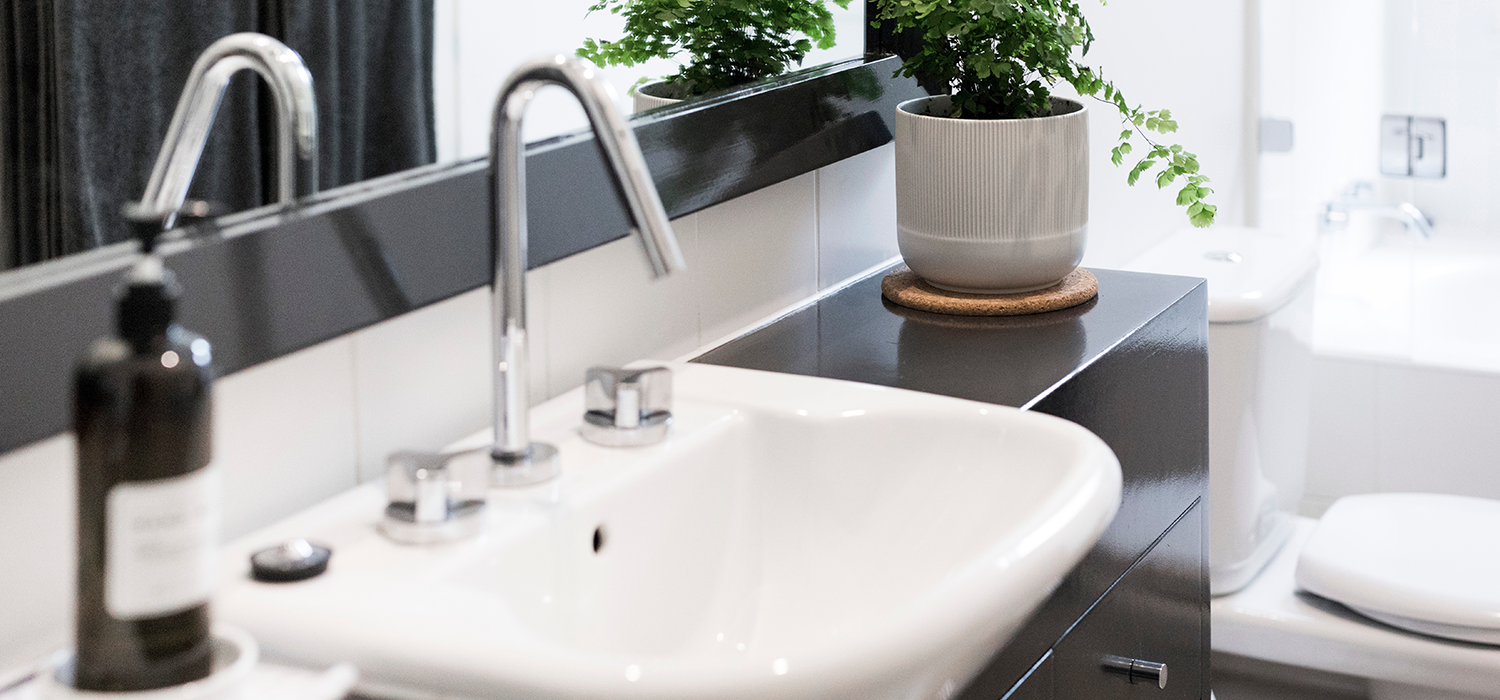
Exploring Bathroom Sink Units
A bathroom sink unit is a comprehensive fixture that combines the basin with a vanity, often providing a harmonious and unified appearance. This fusion of components delivers a sleek and efficient design solution, where the sink is not just an isolated element but part of a greater, multifunctional installation. The unit is carefully crafted to integrate the basin, counter space, and storage, making it a practical yet stylish focal point within the bathroom.
The concept of a bathroom sink unit revolves around the seamless incorporation of the sink into a supportive structure that can house plumbing, offer storage, and provide valuable counter space. These units come in a variety of styles to serve not just the aesthetic preferences of homeowners but also the spatial dynamics of different bathroom layouts.
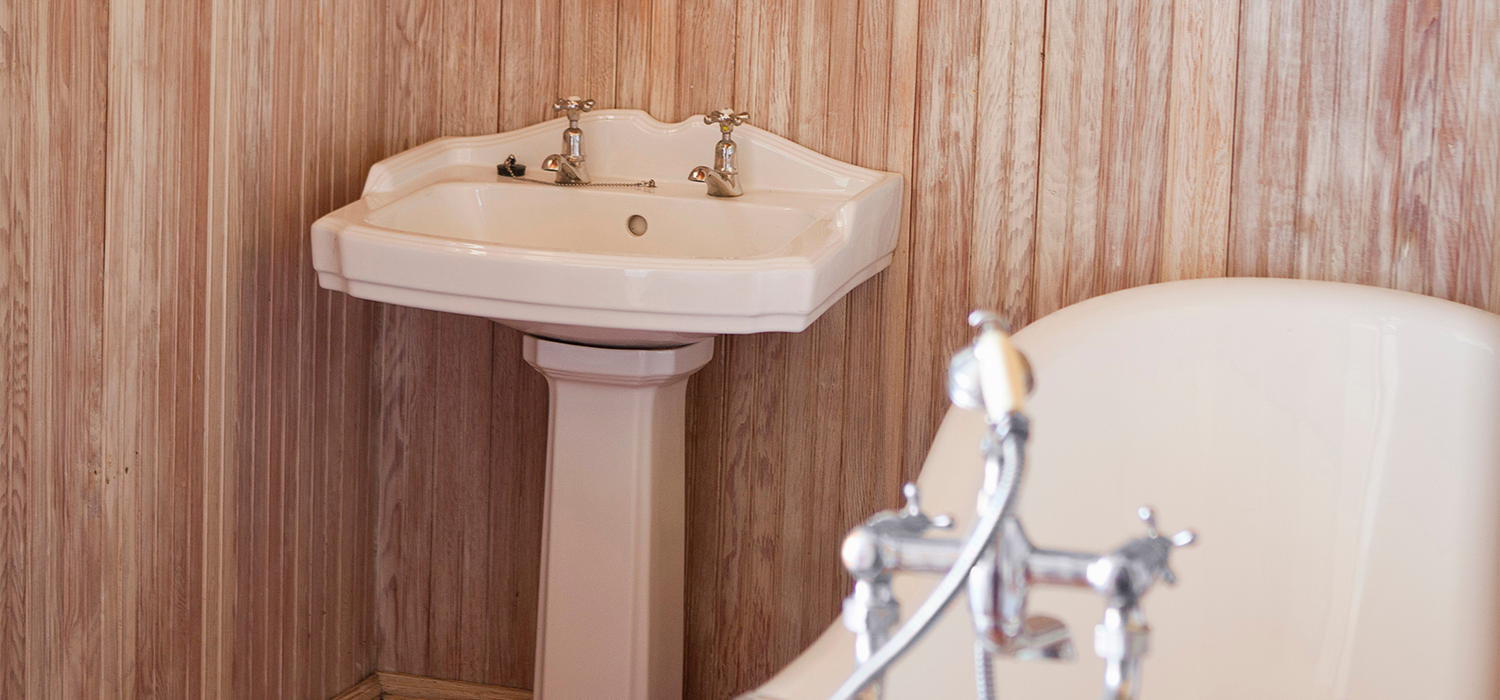

Pedestal and Wall-Mounted Units
For smaller bathrooms or powder rooms, pedestal and wall-mounted sink units offer an ideal solution. Pedestal units feature a basin atop a slender column, which elegantly conceals the plumbing. Wall-mounted varieties, on the other hand, free up floor space and contribute to a minimalist aesthetic, creating an illusion of more space. While these options may not provide storage, they are unmatched in their space-saving qualities and sleek profiles.
Free-Standing and Console Units
Free-standing units are akin to furniture pieces and can be moved if necessary, offering flexibility in layout and design. Console units, with their open structure and built-in sinks, provide a balance between the heft of free-standing pieces and the lightness of wall-mounted units. They can include lower shelves that offer some storage while maintaining an airy feel in the room.

Cabinet-Style Units
For those requiring more substantial storage, cabinet-style sink units are a popular choice. These units feature cabinetry beneath the sink with various configurations of doors, drawers, and shelves. They range from compact designs suitable for single bathrooms to grander double-sink units that command attention and serve as an efficient use of space in master bathrooms.
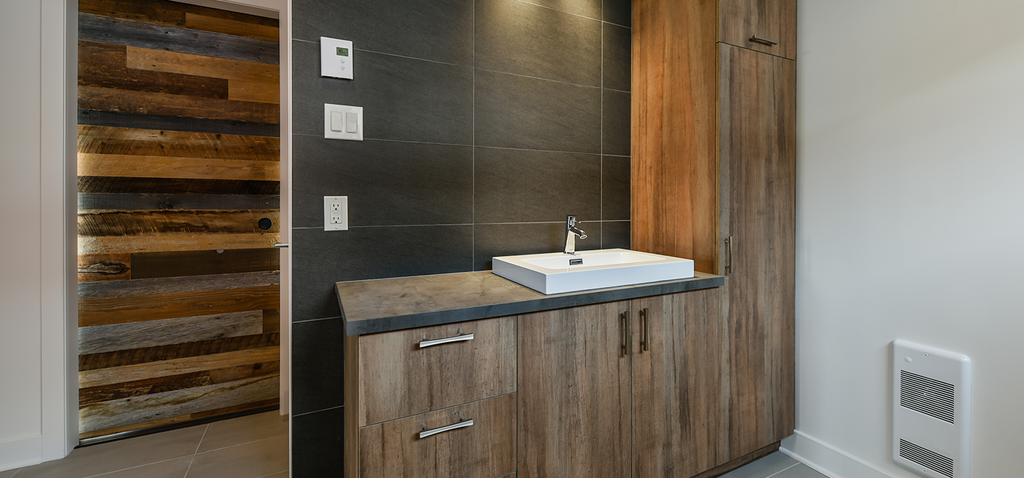
Vessel Sink Units
Vessel sink units bring a touch of modern artistry to the bathroom, with the basin sitting atop the counter like a sculpted bowl. These units are often found in more contemporary designs, and they allow for an impressive range of materials and shapes, from tempered glass bowls to angular, stone basins. The vanity beneath can be styled to match, offering storage while also acting as a pedestal to showcase the unique vessel above.
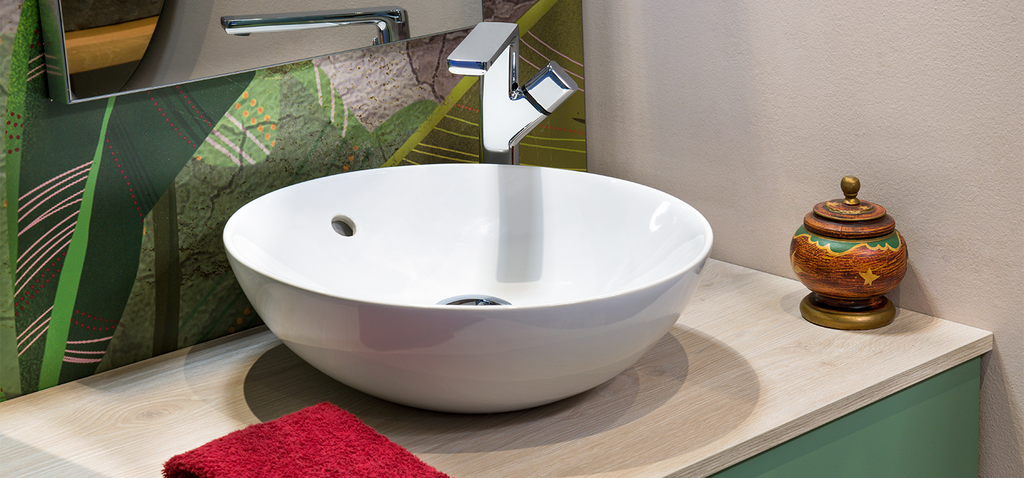
Corner Units
Corner sink units are a clever solution for awkwardly shaped bathrooms where space is at a premium. They are designed to fit snugly into a corner, ensuring that no area is wasted. These units often combine the sink and counter into a single, continuous piece that flows along the walls, maximizing the utility of every inch.
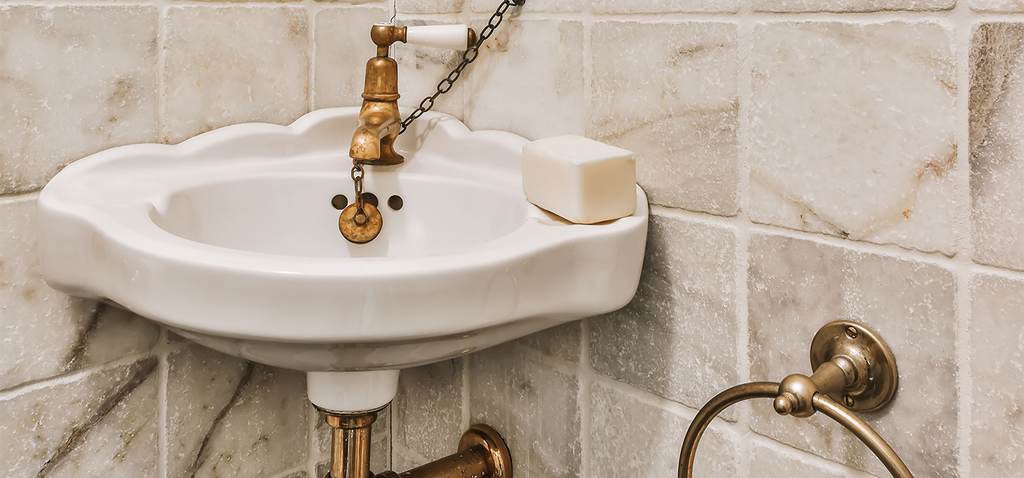
Under-Counter and Integrated Units
Under-counter sink units offer a streamlined look with the basin mounted beneath the countertop, creating a continuous surface that is easy to clean. Integrated units take this a step further by forming the sink and counter out of a single material, providing a sleek and modern look that eliminates any seam or ridge between the sink and counter.
In summary, bathroom sink units are diverse and adaptable, catering to various lifestyles and bathroom configurations. From space-saving pedestal units to luxurious cabinet-style vanities, the right sink unit not only meets the practical demands of bathroom storage and layout but also contributes to the overall aesthetic and ambiance of the room. Selecting the appropriate style of bathroom sink unit can enhance functionality, elevate design, and transform an ordinary bathroom into a personalised retreat.
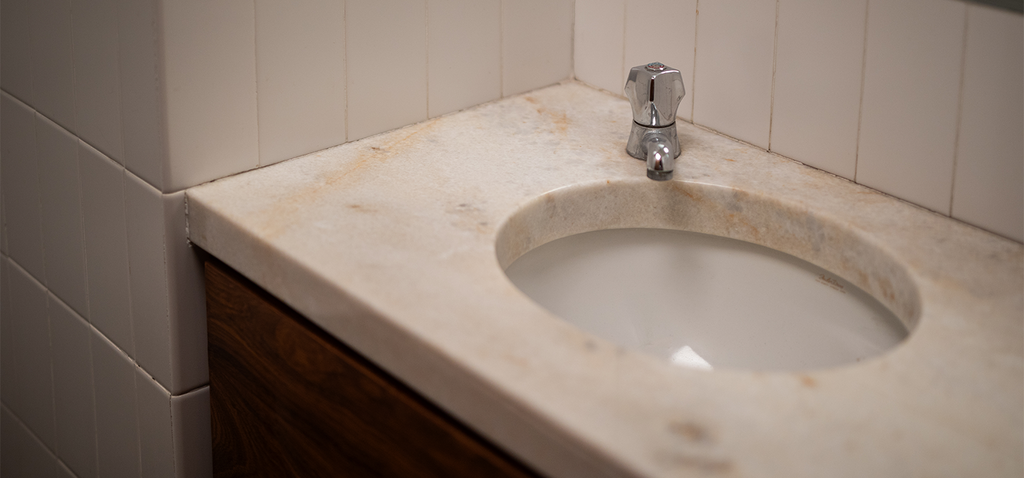
The Versatility of Sink Vanity Units
Sink vanity units are the quintessence of multifunctional bathroom design, marrying the utility of a sink with the ample storage of a vanity. This duality of function makes them an indispensable component of any bathroom. Far from being a mere necessity, these units are transformative in how they augment both the organization and the aesthetic of the space.
The dual function of sink vanity units is rooted in their design. The upper portion hosts the sink, often set into a countertop that provides space for daily rituals—from washing hands to prepping for the day or night ahead. Below, the vanity offers cabinetry or shelving, cleverly hiding plumbing and providing organized storage for everything from toiletries to towels.
Selecting the right sink vanity unit is not just a matter of size or storage—it's about crafting a cohesive bathroom design. Here are some expert tips to ensure that your choice enhances your bathroom's functionality and style:
- Assess Your Space and Needs
Before falling for a particular style, take stock of the available space and your storage requirements. For smaller bathrooms, a floating vanity unit can create the illusion of space without sacrificing function. Larger bathrooms may accommodate expansive units with double sinks and extensive cabinetry.
- Material Matters
Sink vanity units come in a range of materials. Consider the bathroom’s humidity and select materials that can withstand moisture and are easy to clean. For a luxurious look, stone countertops are enduring and elegant, while solid wood brings warmth and richness. For modern minimalism, consider materials like glass or metal for a sleek edge.
- Harmonize with Your Bathroom’s Style
Ensure that the vanity unit complements the existing or planned design of your bathroom. A modern, minimalist bathroom might benefit from a vanity with clean lines and unadorned surfaces, while a more traditional space can be enhanced with a unit featuring classic wood finishes and ornate hardware.
- Think About the Sink
The choice of sink—whether an under-mount, top-mount, or vessel—will affect the overall look and usability of the vanity unit. Consider the ease of cleaning, the impact on available counter space, and how the style of the sink aligns with your bathroom's aesthetic.
- Opt for Ample Countertop Space
If the daily bathroom routine includes an array of products, select a vanity unit with ample counter space. This provides room to display essentials beautifully and helps to maintain a clutter-free environment.
- Integrate Innovative Storage Solutions
Look for vanities with smart storage solutions like built-in organizers, drawer dividers, or electrical outlets tucked inside cabinets for charging grooming devices. These features enhance the unit's functionality and convenience.
- Lighting Integration
Good lighting is crucial in a bathroom, especially around the vanity. Consider how the unit will work with existing lighting or how you might add task lighting above or around the mirror to ensure a well-lit space for daily routines.
- Reflect on Hardware
The hardware on your sink vanity unit—faucets, knobs, and drawer pulls—can serve as jewellery for the bathroom. These elements should not only match the style of the unit but also complement the other metal finishes in the bathroom to create a cohesive look.
A well-chosen sink vanity unit becomes a cornerstone of the bathroom’s design and function. By merging aesthetic preferences with practical necessities, a sink vanity unit can fulfil the promise of a bathroom that’s as efficient as it is beautiful, providing a daily sanctuary for those who use it.

Streamlining with Bathroom Sink Vanity Units
Bathroom sink vanity units are a paragon of streamlined design, allowing for a cohesive look that can enhance the tranquillity and aesthetic fluidity of a bathroom. Their integrated design marries the functional aspect of a sink with the tailored storage of a vanity, creating a unified piece that is both practical and visually appealing.
An integrated bathroom sink vanity unit can often serve as the anchor for the bathroom's overall design theme. By choosing a unit where the sink and storage meld into one another with matching materials and complementary lines, you create a seamless look that can make the space appear larger and more inviting.
Designing for Cohesion
To achieve a seamless look in the bathroom with a sink vanity unit, consider the following ideas:
- Material Continuity
Select materials that can be carried through to other elements in the bathroom. For example, a marble-top vanity unit can be echoed in marble tiling or accessories, tying the room together.
- Colour Coordination
Choose a colour palette for your vanity unit that complements or matches the bathroom walls and flooring. Neutral tones can enlarge a space and provide a backdrop for adding personal touches with accessories.
- Minimise Contrast
Avoid high contrast between the vanity unit and the rest of the bathroom to maintain a unified appearance. If the unit is dark, consider darker tones for the walls or floors to balance the visual weight of the piece.
- Flush Installation
Where possible, opt for a sink that is flush with the vanity surface. This creates an uninterrupted line that is not only sleek but also makes for easier cleaning and maintenance.
- Handleless Drawers and Cabinets
Handleless drawers and cabinet doors can lend a modern, minimalist look to your vanity unit. They provide a smooth front that helps reinforce the streamlined design of the space.
- Floating Vanity Units
A floating vanity creates an open, airy feel and can make a bathroom look more spacious. The gap between the vanity and the floor also allows for continuity of flooring, further unifying the room.
- Integrated Lighting
Consider integrating lighting into the vanity unit itself, such as under-cabinet lights that illuminate the floor or LED strips that frame the unit. This not only provides ambient lighting but also highlights the vanity as a key feature.
- Matching Fixtures
Ensure that all fixtures, like taps and spouts, are in harmony with the vanity unit's style. Consistent finishes and styles across these elements can have a big impact on the room's overall feel.
- Streamlined Storage
Choose a vanity with storage that fits flush to the edge of the unit and has internal organizational systems. This keeps the exterior sleek while the interior remains functional.
- Consistent Shapes and Lines
If the vanity unit has a distinctive shape or line, repeat this design element elsewhere. For instance, a curved vanity could be matched with similarly curved shapes in mirrors or bathroom hardware.
By focusing on these aspects of design, the bathroom sink vanity unit can be integrated into the bathroom environment seamlessly, ensuring a design that is as intuitive as it is pleasing to the eye. When done correctly, a well-designed bathroom sink vanity unit isn't just a storage solution; it becomes a statement piece that elevates the elegance and harmony of the entire space.

The Convenience of Vanity Units with Basin
Vanity units with an integrated basin stand at the intersection of functionality and sophisticated design. These units encapsulate convenience by providing homeowners with a two-in-one solution that not only saves space but also creates a streamlined look within the bathroom. The inherent efficiency of having a basin directly above storage space allows for easy access to necessities and simplifies the process of organizing toiletries and cleaning products, all while maintaining a clean aesthetic.
The convenience of a vanity unit with a basin can be experienced in both its installation and daily use. By combining these two essential bathroom elements, installation is simplified, requiring fewer separate pieces to be fitted together. For everyday use, the proximity of storage to the point of use — the basin — means everything has a place, and everything is within reach when it is needed most.
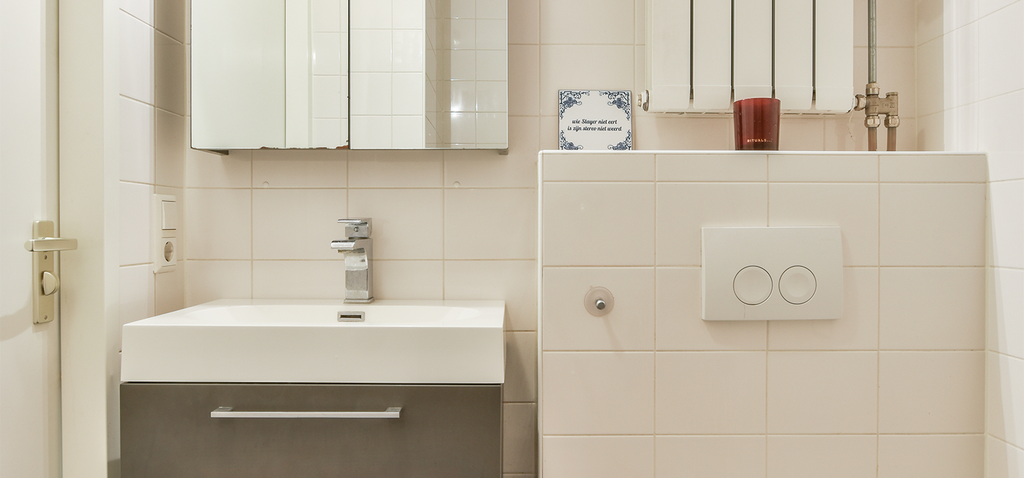
Design Solutions for Small Bathrooms
In smaller bathrooms, the challenge is to maximize space without sacrificing style or functionality. The following are design suggestions tailored to compact spaces:
- Wall-Hung Vanity Units
A wall-mounted vanity with a basin frees up floor space, giving the illusion of a larger room. This design choice also allows for easier cleaning of the bathroom floor.
- Corner Vanity Units
Utilize every inch by incorporating a corner vanity unit with a basin. The triangular shape fits snugly into corners, providing a practical storage solution without encroaching on the central floor area.
- Slimline Units
For narrow bathrooms, consider a slimline vanity unit with a smaller basin. These units are less deep but can still provide ample storage for essentials.
- Integrated Towel Rails
Select vanity units with built-in towel rails or hooks to save on wall space. These features allow for towels to be accessible right where you need them, at the basin.
Design Considerations for Larger Bathrooms
Larger bathrooms offer more freedom for vanity unit designs, allowing for expansive countertops and additional storage. Here are ideas for larger spaces:
- Double Basin Units
A double basin vanity unit is a luxury in larger bathrooms, creating a highly functional space for multiple users while maintaining personal space and storage.
- Full-Length Units
Consider a full-length vanity unit that spans the length of a wall for an impressive visual impact. This maximizes storage and can incorporate varied types of cabinetry, such as drawers and open shelving.
- Seating Areas
Incorporate a seated area within the vanity unit for added convenience. A space to sit during grooming routines adds comfort and utility, especially when paired with a well-placed mirror.
- Statement Basins
With more space, you can opt for larger, statement basins that become the focal point of the vanity unit. These can be undermounted, top-mounted, or vessel styles, depending on preference.
For both small and large bathroom designs, the key to the convenience of vanity units with basins lies in their ability to be tailored to the needs of the space and the user. Whether through the clever use of space-saving designs or the luxurious expansiveness of larger units, the combination of a basin with a vanity unit offers a pragmatic and elegant solution to bathroom design challenges. With a range of materials, finishes, and configurations available, these units can be customized to fit any bathroom layout, ensuring that convenience and style are accessible to all.
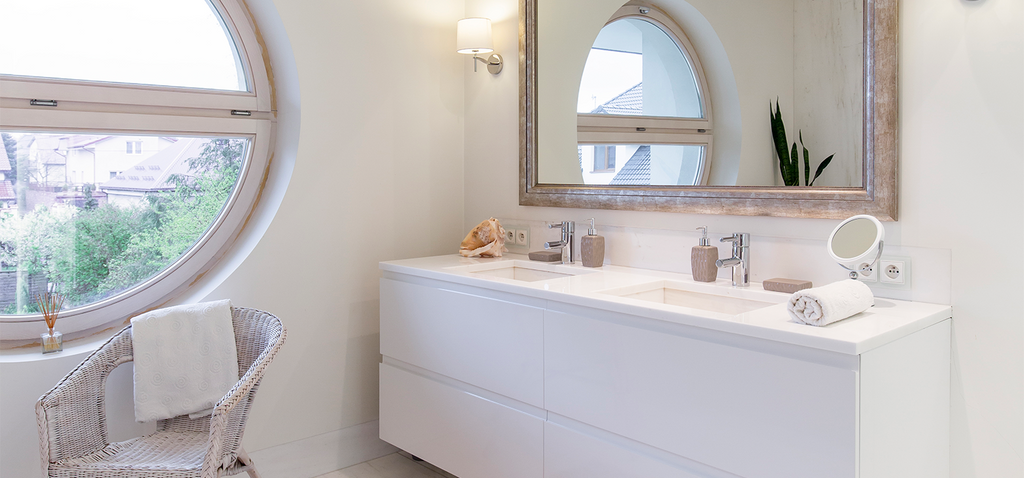
Smart Storage Solutions: Bathroom Sink with Storage
Bathroom sinks with built-in storage are a testament to clever design, combining the everyday utility of a sink with the strategic use of space for storage. This marriage of form and function addresses a primary concern in bathroom design: how to maintain a sleek and tidy area while having easy access to bathroom essentials.
Efficient Use of Space
Built-in storage under or around the bathroom sink can take various forms, from cabinets and drawers to shelves and hidden compartments. The key is to use the space efficiently to avoid clutter and ensure that each item has its proper place. Here's how to make the most out of your bathroom sink with storage:
- Customized Compartments
Customize storage spaces to fit your needs. Adjustable shelves, drawer dividers, and pull-out organizers can help keep personal items neatly arranged and accessible. Consider special compartments for smaller items like makeup, razors, or hair accessories to prevent them from getting lost among larger items.
- Utilising Vertical Space
Don't overlook the vertical space. Tall cabinets and open shelving can make use of upward space, providing areas to store items that are infrequently used or need to be kept out of reach. Stackable bins or baskets on shelves can help in organizing and segregating items.
- Integrating Multi-Purpose Fixtures
A mirror with a hidden cabinet behind it or a basin-top dispenser for hand soap can minimize the need for additional items on the counter. Similarly, a towel rack attached to the side of the vanity unit can save space elsewhere in the bathroom.
- Opting for Deep Drawers
Deep drawers are particularly handy for storing bulky items like hairdryers, towels, or cleaning supplies. A deep drawer with a stackable organizer can double the storage capacity and help keep everything in order.
- Organising Products by Use
Arrange your products by frequency of use. Everyday items should be at arm's reach, possibly in an open tray on the counter or in the topmost drawer. Less frequently used items can be stored further back in cabinets or on higher shelves.
- Harmonising Aesthetics and Function
Choose storage solutions that complement the aesthetic of your bathroom. Baskets or boxes that match the decor can provide storage while enhancing the room's look. Similarly, using uniform containers for storing smaller items can keep things neat and visually appealing.
- Slim Storage for Narrow Spaces
In bathrooms where space is at a premium, consider a slim rolling shelf that can fit into narrow openings, such as between the sink unit and the wall. This hidden storage can hold a surprising amount of products without taking up much space.
- Easy-to-Clean Surfaces
For areas around the sink, where moisture and spills are common, opt for materials that are resistant to water damage and easy to clean. Surfaces such as laminated wood or non-porous composites can be wiped down quickly, preventing water from seeping into storage areas.
- Adaptable Storage Accessories
Incorporate removable storage accessories, such as caddies or modular units, that can be taken out for cleaning or rearranged as needs change.
- Smart Integration of Technology
For a truly modern storage solution, consider integrating technology like built-in USB ports or outlets inside drawers for charging electric toothbrushes, razors, or other gadgets, keeping them out of sight but always ready for use.
A bathroom sink with storage should aim to reduce clutter, maintain an organized appearance, and promote a peaceful and efficient bathroom experience. By implementing these smart storage solutions, you ensure that your bathroom remains a haven of calm and order, where every item is thoughtfully housed and the design aesthetic is never compromised.
Ultimate Guide to Selecting the Perfect Bathroom Vanity: From Space Planning to Fixture Integration

Choosing Bathroom Vanity Units
Selecting the right bathroom vanity unit is pivotal to the functionality and aesthetic of your bathroom. It's not merely a cabinet; it’s a centrepiece that ties the room together, serving both as a visual anchor and a practical hub for daily routines. The following guide will lead you through the selection process and help you harmonize your vanity unit with the existing bathroom fixtures.
Understanding Your Space and Needs
Before diving into styles and materials, assess the space where the vanity unit will reside. Measure the area carefully, noting the available width, depth, and height. Consider door swing and the flow of traffic in the room to avoid a cramped environment. Also, think about your storage needs: How many people will use the vanity? What items will you need to store? Answering these questions helps in determining the size and type of vanity unit that will best serve you.
Style Considerations
Bathroom vanity units come in a wide array of styles, from sleek, modern designs with straight lines and minimalistic hardware to more traditional or rustic vanities with ornate details and rich wood finishes. When selecting a style:
Look for design coherence with the existing elements in your bathroom, such as the bathtub, toilet, and hardware finishes.
Consider the architectural style of your home. A modern, floating vanity may not suit a Victorian-era house, whereas a vanity with classic lines could look out of place in a contemporary loft.
Think about longevity and how the style of the vanity unit will hold up to design trends. Classic shapes and neutral colours tend to stand the test of time better than avant-garde designs.
Material Durability and Maintenance
The bathroom is a humid environment, and selecting materials that can withstand moisture and are easy to clean is crucial:
For countertops, materials like marble ,quartz, granite, or solid surfaces offer durability and ease of maintenance. Cabinet materials vary from solid wood, which adds warmth and character, to thermofoil or laminates, which can be more moisture-resistant and budget-friendly. Evaluate the finish of the vanity unit. High-gloss finishes can show watermarks and fingerprints more readily, while matte finishes can conceal smudges better.
Matching with Other Bathroom Fixtures
A cohesive bathroom design often involves matching the vanity unit with other fixtures:
If your fixtures are chrome, look for a vanity with chrome hardware or consider replacing the knobs and pulls to match.
The finish of the sink should complement the vanity countertop. A white porcelain sink can look striking against a dark stone top, while a vessel sink in copper can add a touch of elegance to a simple vanity.
Pay attention to the style of the faucet. An ornate vanity pairs well with a similarly styled faucet, while a minimalist vanity benefits from a faucet with clean lines.
Storage and Organisation
A vanity unit should cater to your storage needs without creating clutter:
Drawers are excellent for smaller items and can come with organizers for makeup and toiletries. Cabinets with doors are suitable for larger items. Consider pull-out shelves or organizers to maximize the space.
Think vertically. If you have limited floor space, choose a taller vanity unit with stacked drawers or cabinets.
Integrating Lighting
Lighting is often overlooked during vanity selection but is crucial for a functional bathroom:
Ensure the vanity area is well-lit with task lighting that eliminates shadows and provides clear illumination for grooming. Wall sconces on either side of the mirror or overhead lighting can be both practical and decorative elements.
Ventilation and Plumbing Considerations
Make sure the vanity unit does not obstruct any existing ventilation grills or interfere with plumbing. Consult with a plumber if you’re unsure about the compatibility of the vanity unit with your bathroom’s plumbing configuration.
By carefully considering these factors, you can choose a bathroom vanity unit that not only meets your functional needs but also enhances the beauty and cohesion of your bathroom. It's an investment in the comfort and enjoyment of your home, where every detail contributes to a harmonious and inviting atmosphere.
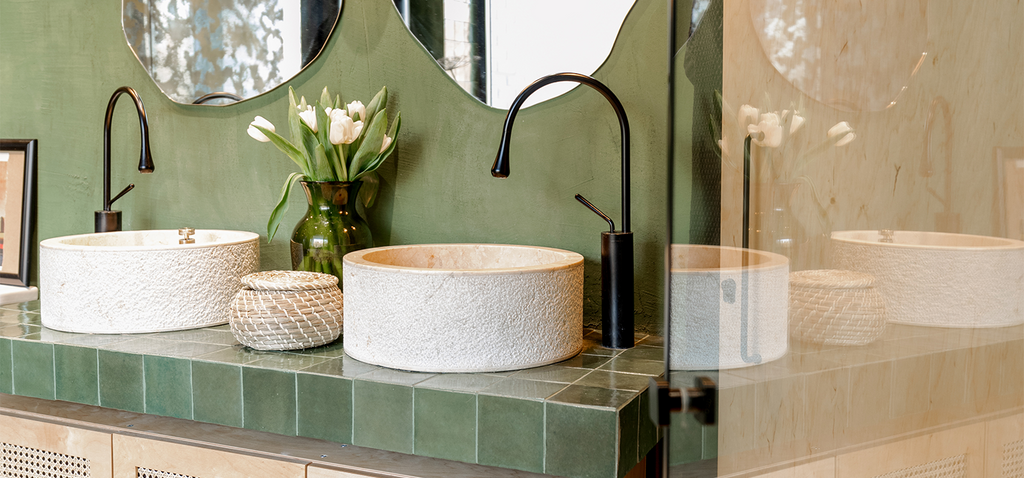
Integrating Basin and Vanity Units
Integrating the basin with the vanity unit is a design strategy that ensures fluidity and cohesion in bathroom aesthetics. When these two elements are thoughtfully combined, they create a unified look that can make the bathroom appear more spacious, streamlined, and custom-designed. To achieve this level of integration, careful selection is key.
Choosing the Right Basin
When selecting a basin that will blend seamlessly with a vanity unit, consider the following:
- Complementary Shapes
If the vanity unit has soft, curved edges, a rounded basin can continue the gentle flow of lines. For angular, modern vanities, a square or rectangular basin maintains the clean, geometric aesthetic.
- Proportional Sizing
The basin should be proportionate to the vanity unit. A large vanity can accommodate a wider basin or even dual basins, while a compact vanity requires a smaller, perhaps more shallow, basin.
- Consistent Design Language
A basin that echoes design features of the vanity creates a sense of unity. For instance, a basin with a textured exterior can complement a vanity with a grainy wood finish.
- Colour Coordination
The colour of the basin should coordinate with the vanity's colour palette. White basins are universally adaptable, but tinted or material-specific basins should be chosen to harmonize with the vanity’s hues.
- Material Match-Up
The material of the basin can be matched with accents on the vanity, such as a stone basin with a vanity countertop in a similar stone finish.
Benefits of Integrated Basin and Vanity Units
The integration of basin and vanity units offers numerous advantages, both functional and aesthetic:
- Visual Harmony
A basin that fits perfectly with a vanity unit creates a streamlined look. This harmony can be a subtle yet powerful element in design cohesion.
- Space Efficiency
Integrated units are designed to save space. They often take up less room than separate pieces and can make the bathroom feel more open.
- Ease of Cleaning
With fewer gaps and seams, integrated basin and vanity units are typically easier to clean. The smooth transition from basin to counter allows for quick wipe-downs without the hassle of cleaning around separate components.
- Customisation
Opting for an integrated unit means more options for customization. You can tailor the setup to your exact storage needs, aesthetic preferences, and spatial constraints.
- Increased Resale Value
A bathroom with well-chosen integrated fixtures can appeal to potential home buyers, as it suggests careful consideration of design and functionality.
- Streamlined Installation
With fewer separate parts to worry about, integrated units can be easier and often less costly to install compared to individual pieces that need to be harmonized on-site.
In selecting an integrated basin and vanity unit, it is important to look at the bathroom as a whole. Consider how the unit will interact with other features such as tiles, fittings, and lighting. The right choice will not only provide practical benefits but will also contribute to the overall atmosphere, infusing the space with a sense of balance and bespoke luxury. Whether embarking on a new build or renovating an existing space, the integrated basin and vanity unit is a cornerstone choice that defines the bathroom's character.
Stylish and Functional Bathroom Units with Sink
Bathroom units with an integrated sink represent the pinnacle of bathroom design, where style meets functionality head-on. These units, combining storage and washing facilities in one sleek package, not only optimize space usage but also elevate the bathroom's aesthetic appeal. Let's delve into the options available and discuss the critical aspects of materials and durability that come into play.
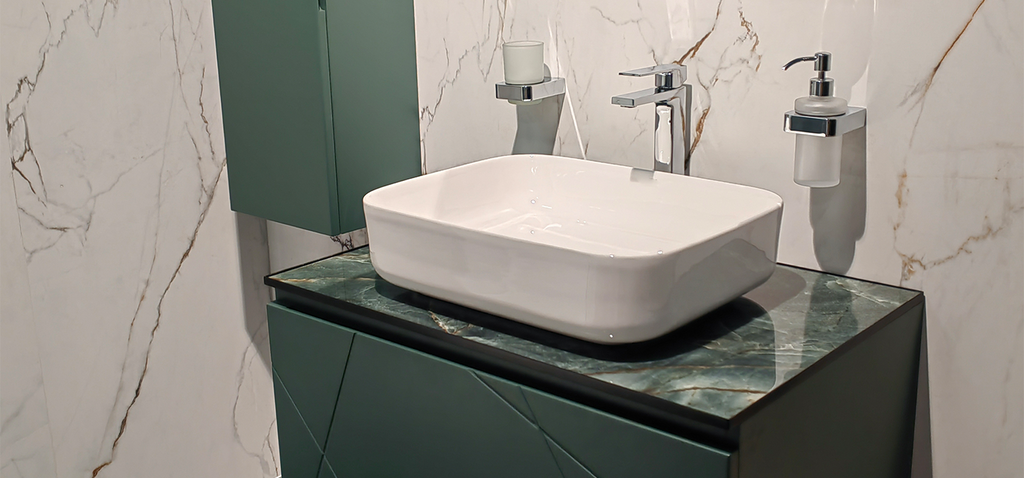

Options for Integrated Sink and Vanity Units
- Single vs. Double Sink Units
Single Sink Units are ideal for smaller bathrooms or guest baths, offering ample storage without overwhelming the space. Double Sink Units cater to the needs of busy family bathrooms or luxurious en-suite facilities, providing each user with personal space and storage.
- Floating vs. Freestanding Units
Floating Units attach directly to the wall, freeing up floor space and lending a modern, spacious feel to the bathroom. Freestanding Units are more traditional and can offer more storage space, with a sturdy and classic presence.
- Modern Minimalist Designs
Characterized by clean lines and a lack of ornamentation, these units focus on simplicity and functionality. Materials like glass, smooth stone, or lacquered wood emphasize the sleek design.
- Traditional and Classic Styles
Featuring ornate details, such as carved wood or antique-finish hardware, traditional units bring a sense of timeless elegance to the bathroom.
- Innovative Material Combinations
Combining different materials, such as wood with metal accents or stone with glass basins, can create a unique focal point in the bathroom.

Materials and Durability
The choice of materials for bathroom units with a sink is crucial, not only for the unit's appearance but also for its longevity and ease of maintenance.
- Wood and Wood Veneers
Solid wood is durable and warm but requires sealing to withstand the humid bathroom environment. Wood veneers offer the beauty of wood at a lower cost but must be carefully chosen to ensure they are waterproof and resistant to peeling.
- Engineered Stone and Solid Surfaces
Engineered stone, such as quartz, provides the luxury look of natural stone without the maintenance, being non-porous and resistant to stains. Solid surfaces are seamless and can be moulded into any shape, offering a wide range of design possibilities and easy repair of scratches or dents.
- Metal and Glass
Metal frames can add an industrial edge or sleek modern lines to the vanity, though they require coatings to prevent rust in damp conditions. Glass sinks and countertops create a light, airy feel but need regular cleaning to avoid water spots and can be prone to chipping.
- Porcelain and Ceramic
For sinks, porcelain and ceramic are classics due to their durability and ease of cleaning. They resist staining and scratching, maintaining their finish for years.
- Composite Materials
Composites, like acrylic and polyester blends, offer a wide range of colours and patterns, are lightweight, and have a non-porous surface that is easy to clean.
Durability Concerns and Maintenance
When selecting materials for your bathroom unit with a sink, consider not only the initial appearance but also how the unit will age. Durability is key in the humid, often busy bathroom environment. Opt for materials that can withstand frequent use, are easy to clean, and resistant to moisture, stains, and mildew. Regular maintenance tailored to the material—such as sealing wood or stone, polishing metal, or using non-abrasive cleaners—will ensure the longevity and beauty of the unit.
In conclusion, bathroom units with integrated sinks offer a blend of style and practicality that can suit any preference or space requirement. By carefully selecting the right materials and considering both design impact and durability, homeowners can create a bathroom that is not only a functional space but also a personal retreat reflective of their style.
Enhancing Practicality with Bathroom Sink Units with Drawers
Bathroom sink units equipped with drawers represent a pinnacle in the design for practicality and organization within the intimate confines of a bathroom. This ingenious configuration combines the essential functionality of a sink with the invaluable asset of organized storage space. Let’s delve into the myriad advantages of such units and explore how to maximize their utility through effective organisation.
Advantages of Bathroom Sink Units with Drawers
- Clutter Reduction
Drawers offer a dedicated space for each item, which significantly reduces countertop clutter. This not only makes the bathroom more visually appealing but also more serene and conducive to relaxation.
- Improved Organisation
With everything assigned its own space, finding and accessing toiletries, cosmetics, and other essentials becomes effortless. This organizational efficiency can save time during both morning and evening routines.
- Customisable Storage
Many modern drawer units come with adjustable dividers or modular organizers, allowing you to tailor the space to fit your specific storage needs. This flexibility accommodates items of various sizes, from bulky hair dryers to tiny bobby pins.
- Enhanced Cleanliness
Drawers keep your items off the countertop and out of sight, reducing dust accumulation and making cleaning easier. Furthermore, many drawers are designed with materials that withstand humidity and are easy to wipe down.
- Optimal Use of Space
Drawers utilise the space beneath the sink effectively, often offering more storage capacity than open shelving or cabinets with doors. This is particularly beneficial in smaller bathrooms, where maximizing every inch is crucial.

Organizing Tips for Maximizing Drawer Space
To fully leverage the benefits of bathroom sink units with drawers, consider these organizing tips:
- Utilize Drawer Organizers
Invest in drawer dividers or modular organizer systems to create a place for every item. These organizers can prevent items from shifting and getting mixed up when drawers are opened and closed.
- Prioritize Accessibility
Arrange your items based on frequency of use. Keep daily essentials in the top drawers or at the front of deep drawers, and store less frequently used items further back or in lower drawers.
- Group Similar Items
Organize items into categories (e.g., hair care, skincare, oral hygiene) and store them together. This not only helps in finding items more quickly but also in keeping track of your inventory to avoid overbuying.
- Maximise Vertical Space
If your drawers are deep, stackable organizers can be a game-changer. They allow you to store items on two levels, doubling the storage capacity of a single drawer.
- Label for Efficiency
Consider labeling drawer sections, especially in shared bathrooms. Labels can guide users directly to what they need, saving time and keeping the organization intact.
- Keep It Light
Avoid overloading drawers with heavy items, which can strain the mechanisms and shorten the lifespan of your unit. If you have bulky items, consider storing them elsewhere or in bottom drawers to distribute weight evenly.
- Regular Decluttering
Make it a habit to go through your drawers periodically to remove empty containers, expired products, or items you no longer use. This keeps your storage spaces functional and organized.
- Embrace Minimalism
Adopt a minimalist approach by keeping only what you truly use and need. This not only makes organizing easier but also contributes to a more tranquil bathroom environment.
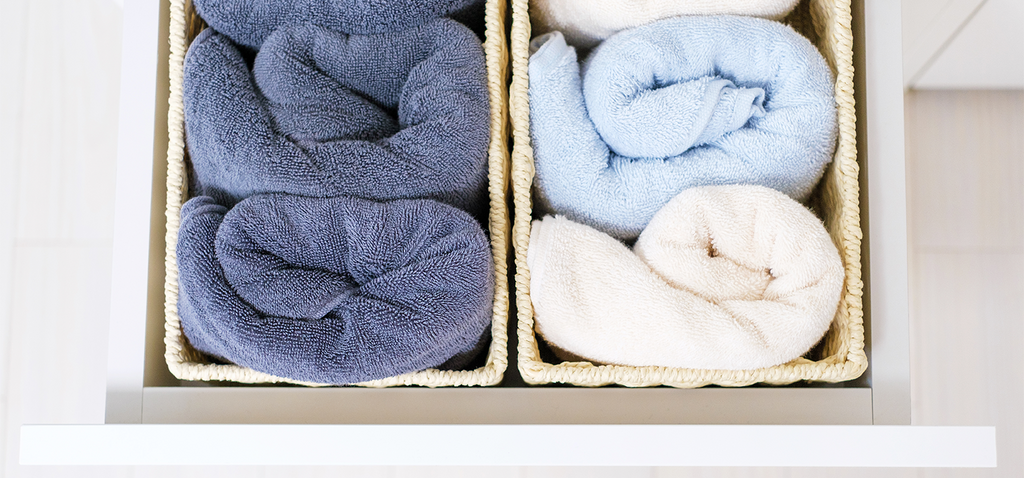
Bathroom sink units with drawers are a testament to how thoughtful design can significantly enhance the functionality and aesthetics of a space. By following these organizing tips, you can transform your bathroom into a model of efficiency, where every item has its place, and the beauty of your bathroom is not marred by clutter. This practical yet elegant solution underscores the importance of intelligent storage in creating serene and orderly spaces within our homes.
The journey through selecting the perfect bathroom sink and vanity unit is one that intertwines functionality with aesthetic appeal, demonstrating that practical needs and stylish desires do not have to be mutually exclusive. The right choice in this foundational element of bathroom design not only caters to the daily rituals and storage necessities but also significantly elevates the room's overall ambiance, transforming it into a sanctuary of tranquillity and style.
The importance of this selection process cannot be overstated. It influences the bathroom's functionality, affecting how efficiently the space is used and how effortlessly the daily routines are carried out. Simultaneously, the aesthetic impact of a well-chosen sink and vanity unit shapes the bathroom's character, setting the tone for a serene retreat that reflects personal style and harmony.
When making this pivotal choice, consider the balance between aesthetics and functionality. A beautiful vanity unit that offers inadequate storage may soon lose its appeal, just as a highly functional one that clashes with your bathroom's design ethos can disrupt the visual flow and feel of the space. The goal is to find a unit that complements your lifestyle while adding a touch of elegance and design coherence to your bathroom.
Embarking on the path to revitalize your bathroom begins with exploring the vast array of sink and vanity units available. From sleek, modern designs that speak to the minimalist at heart, to classic styles that evoke timeless elegance, the perfect piece awaits to transform your bathroom into a reflection of your unique taste and functional needs.
We invite you to delve into the world of bathroom sink and vanity units, discovering the myriad of options that promise to redefine your space. Consider not just the immediate impact of your choice but the lasting effect it will have on your daily life and the overall atmosphere of your home.
Take the next step in your home transformation journey. Let your bathroom be not just a space of necessity but a sanctuary of beauty and efficiency. Explore, select, and embark on the path to a bathroom that seamlessly blends functionality with aesthetic allure, proving that practical spaces can also be personal havens of style and comfort.
Explore our basin vanity unit collection here
Look into basins collection here
Other related blogs:















































































































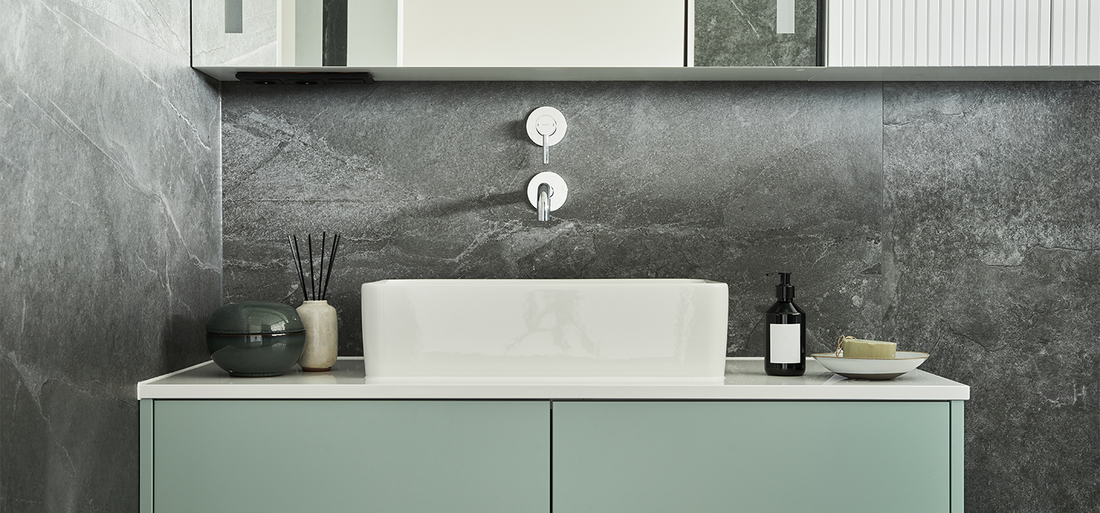
Leave a comment
All blog comments are checked prior to publishing